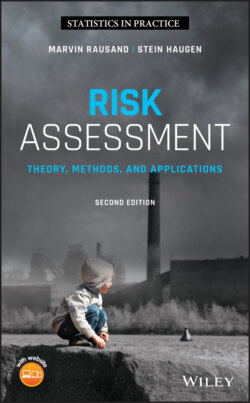Читать книгу Risk Assessment - Marvin Rausand - Страница 239
Example 5.2 (RAC for nuclear power plants)
ОглавлениеMuch effort has been devoted to establishing quantitative RAC in the nuclear power industry. The following items have, for example, been proposed as candidates for setting quantitative criteria (e.g. see Cameron and Willers 2001 ; CNCS 2009):
1 The overall risk to the public.
2 The risk to an individual.
3 The sum of frequencies of all event sequences that can lead to a release of radioactive material that may require temporary evacuation of the local population (called small release frequency, SRF).
4 The sum of frequencies of all event sequences that can lead to a release of radioactive material that may require long‐term relocation of the local population (called large release frequency, LRF).
5 The conditional probability of containment failure (given core damage).
6 The sum of frequencies of all event sequences that lead to significant core degradation (called core damage frequency, CDF).
7 The probability of a particular accident sequence.
8 The reliability of individual safety systems.
Quantitative criteria for new nuclear power plants may, for example, be formulated as follows (CNCS 2009):
CDF per reactor year
SRF per reactor year
LRF per reactor year
There is still no general agreement on the values to be used for these limits. As Fischhoff et al. (1981) argue, it may never be possible to define these limits completely generally.
Observe that the quantitative criteria mentioned in Example 5.2 are not risk criteria, but rather probability criteria, stating limits on the probability of certain events per reactor year. This is used in some contexts, in particular for events where the consequence is considered to be high in any case.
